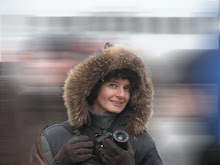Merging the Paths of Grief and Life with Prescriptive Photomontage
Wrestling with the death of her grandchild, a professional grief counselor was completely thrown off balance by her own grief. She writes of:
- searching her memory for home movies of WHO was lost
- withdrawing from social interactions to remember WHEN all was lost
- trying to identify a specific moment or event that explains WHY it happened, and finally
- making peace with WHAT happened, gradually, over time
Yes, ever so gradually, this grandmother came to the realization that she was separating two paths - grief and life - when she spoke to strangers. Not until she could explain to people outside her inner circle that she was a different person now as a result of her granddaughter's death was she able to find her equilibrium again. What begins as a feeling of "embarrassment at the collision of private and public selves," (Meghan O'Rourke, Why We Write About Grief, The New York Times, February 27, 2011) eventually matures into gravitas. (Wikipedia defines gravitas variously as "weight, seriousness, dignity, or importance, and connotes a certain substance or depth of personality.")
This makes sense in my work as a prescriptive artist. The photomontages I create from repurposed photos of the loved one and the bereaved are designed to celebrate a life while never shying away from the WHO-WHEN-WHY and WHAT of the death. The imagery is meant to convey this new and richer inner life of the bereaved as they dream about their loved one. Like in a healing dream, it's a scene made splendid with humor, irony and symbolism ... their kind of humor, irony and symbolism. And by envisioning a future colored by their spirit, these "healing dreamscapes" produce courage during one of the shakiest periods of our lives. In the words of the writer Joyce Carol Oates:
"... surely those who have been magnanimous in life can be imagined as magnanimous in death. We want to believe that the deceased whom we loved would love us enough to wish us well, in what remains of our lives." (Why We Write About Grief, The New York Times, February 27, 2011).
If I've hit the right notes, the finished product puts the bereaved on the right path again. Where the fork in the road merges again.



2 comments:
Interesting concept. It would never have occurred to me. However, it seems like, in the wrong hands, this could end up being simply hokey. Then again, so could most anything.
Ezekias, tell me more about "the wrong hands". Can you give me a scenario where this might be the case? N
Post a Comment